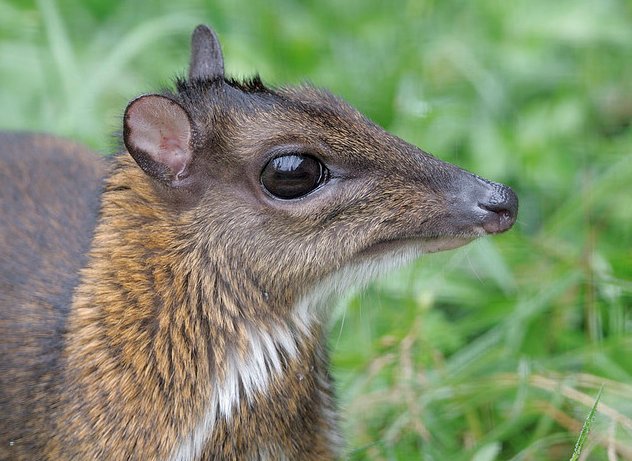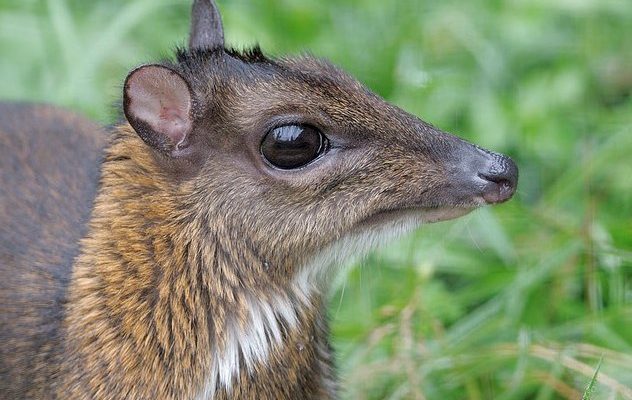
So, what’s the scoop? Mouse deer are not actually deer at all! They belong to a unique family that’s more closely related to giraffes and okapis. Picture them as the cute and quirky cousins of the ungulate family. Let’s dive into some fascinating facts that shine a light on just how special these pint-sized creatures really are.
1. They’re the World’s Smallest Hooved Mammals
When we talk about *tragulus*, it’s hard to overlook their size. Mouse deer are the smallest hooved mammals on the planet! They usually weigh between 8 to 20 pounds and stand about 12 to 16 inches tall at the shoulder. To put that into perspective, they’re roughly the size of a large house cat.
You might be wondering how these little guys manage to navigate through dense forests. Their small stature allows them to slip through tight spaces and hide from predators with ease. Plus, their sly nature means they can quickly dart behind bushes when danger approaches.
2. They Have Unique Antlers
Here’s the thing: not all mouse deer have antlers. In fact, only male mouse deer grow these tiny, protruding antlers. They’re not like the massive antlers you see on elk or moose; instead, these antlers are small, usually just a few inches long. It’s like nature’s way of keeping things compact!
These antlers serve a purpose beyond just looking cool. Males use them during mating season to assert dominance. They’ll often engage in a gentle spar with their antlers, showcasing their strength to attract female mates. It’s a delicate dance, almost like a ballet, as they try to impress without being overly aggressive.
3. An Impressive Sense of Smell
Mouse deer have another cool feature: they possess an incredible sense of smell. This heightened sense allows them to detect predators and potential mates from quite a distance. In the wild, where survival is key, being able to sniff out danger is essential.
You can think of their nose as a built-in alarm system. When a mouse deer catches a whiff of an approaching predator, they quickly freeze in place, blending into their surroundings until the threat passes. It’s a clever survival tactic that has helped them thrive in their natural habitat.
4. They Are Solitary Creatures
Unlike many animals that thrive in packs, mouse deer tend to be quite solitary. They often roam around by themselves, marking their territory using scents. This helps them avoid conflicts with other males and find food without competition.
As night falls, these nocturnal creatures come alive, munching on leaves, fruits, and even twigs. Imagine a quiet night in the forest with a mouse deer wandering alone, nibbling on a tasty snack. Their solitary nature allows them to live peacefully without the hustle and bustle of a larger group.
5. They’re Masters of Camouflage
One of the most fascinating things about mouse deer is how incredibly well they can blend into their environment. Their fur is typically a mix of browns and grays, which helps them hide among leaves and bushes. It’s like wearing a natural camouflage outfit!
When threatened, a mouse deer will often freeze and stay as still as possible. This makes it incredibly hard for predators to spot them. Think of them as little ninjas of the forest—quiet, stealthy, and blending into the shadows.
6. Mouse Deer Have Unique Vocalizations
While they may be small, mouse deer can make a range of interesting sounds. Their vocalizations range from high-pitched whistles to low grunts. These sounds serve as communication methods, especially during mating season.
Males often whistle to attract females, creating a sort of melody in the forest. It’s like their very own romantic serenade. Female mouse deer might respond with softer sounds, signaling their interest. This form of communication is vital for finding partners and establishing territory.
7. They’re Herbivores with a Diverse Diet
When it comes to food, mouse deer are strict herbivores. Their diet consists mainly of leaves, fruits, and tender shoots. However, they’re not picky eaters. In fact, they have a diverse palate that allows them to thrive in varying environments.
In the wild, they spend a good amount of time foraging, using their keen sense of smell to sniff out the tastiest treats. Imagine wandering through a lush forest, discovering an array of edible plants, and munching on whatever looks good. They play a crucial role in their ecosystem by helping to control plant growth in their habitat.
8. Mouse Deer Reproduction: A Slow Process
When it comes to having babies, mouse deer take their time. After a gestation period that lasts about seven months, females typically give birth to a single fawn. This slow reproductive rate means that mouse deer populations can be vulnerable to environmental changes.
Once the fawn is born, it stays hidden in dense foliage for the first few weeks of its life. The mother often spends time away from her baby while it hides, only returning to nurse. It’s a careful balance, ensuring the fawn remains safe from predators while still getting the nourishment it needs.
9. Habitat and Conservation Status
Mouse deer are found primarily in the forests of Southeast Asia, including Indonesia, Malaysia, and parts of India. Unfortunately, their habitat is under threat from deforestation and human encroachment. These changes make it more challenging for them to find food and shelter.
Conservation efforts are essential for ensuring the future of mouse deer populations. Organizations are working to protect their habitats and educate local communities about the importance of preserving these unique animals. Without these efforts, we risk losing another fascinating species.
10. A Growing Interest in Mouse Deer
There’s a rising interest in mouse deer, especially among wildlife enthusiasts and researchers. Their unique characteristics and behaviors make them a captivating subject for study. Conservationists are eager to learn more about their habitat needs and reproductive habits to aid in their preservation.
As more people become aware of these charming creatures, there’s hope for greater conservation efforts. Awareness can lead to action, and who knows? Maybe one day, mouse deer will capture the hearts of many more nature lovers around the world.
In conclusion, the mouse deer is more than just an adorable little creature. They embody the beauty and complexity of nature, from their remarkable adaptations to their unique lifestyles. By learning more about them, we can help preserve their legacy for future generations. So next time you think about wildlife in Southeast Asia, remember the tiny, fascinating mouse deer and their incredible story.

